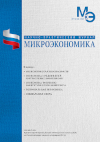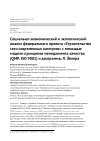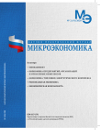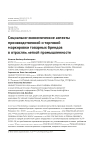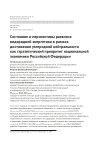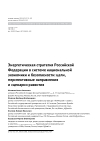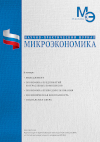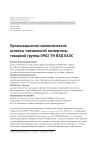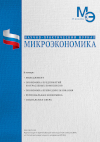Socio-economic and environmental analysis of the federal project «Building a network of modern campuses» using a model of quality management principles (QMP, ISO 9001) and L. Euler diagrams
DOI: 10.33917/mic-3.122.2025.64-76
This article provides a socio-economic and environmental analysis of the federal project «Building a network of modern campuses» using a model of quality management principles (QMP, ISO 9001) and the L. Euler diagram in modern conditions. In this work, the methodology of management analysis of the categorical triplex based on the L. Euler circle diagram is used. This diagram makes it possible to visualize the relationship between quality, ecology, and culture, highlighting their important components and their impact on each other. Also, the analysis of the federal project «Building a modern campus network» is carried out through a set of fundamental beliefs, guidelines, rules and values that are recognized as true and can serve as the basis for project quality management based on the principles of quality management model (QMP, ISO 9001).
An analysis of the federal project «Building a network of modern campuses» using L. Euler’s diagram revealed the weaknesses of the federal project, which are required to be finalized, as well as the development of instructions and uniform standards applicable to all state programs implemented on a regional basis, taking into account the regional context. It has been established that the L. Euler diagram for the management analysis of the categorical triplex is suitable for analyzing the degree of quality not only of management, but also of the implementation of federal projects.
References:
1. Baranova N.V., Yakimenko M.V. Transformation Processes in the Russian Hotel Business // International Academic Journal «BULLETIN OF SCIENCE». 2024;2(6(75)):61-67.
2. Belousova N.A. Development of Hotel Business under Contemporary Circumstances. Economic Sciences. 2024;8-3(95):118-120.
3. Zhelikhovskaya M. International Hotel Chains: Who Works in Russia? Tourist Business Journal [Electronic resource]. URL: https://mag.russpass.ru/business/rubric/biznes/mezhdunarodnye-gostinichnye-seti-kto-rabotaet-v-rossii
4. Official Website of the Federal State Statistics Service [Electronic resource]. URL: https://websbor.rosstat.gov.ru/online/
5. Official Website of Interfax information group. Brands Left – Hotels Remained [Electronic resource]. URL: https://www.interfax-russia.ru/realty/analytics/brendy-ushli-oteli-ostalis /
6. Official Website of RBC. Several International Hotel Brands Left St. Petersburg [Electronic resource]. URL: https://www.rbc.ru/spb_sz/16/07/2022/
7. Official Website of Forbes. «Kommersant»: The Owner of the International Hotel Chain Holiday Inn Is to Leave Russia [Electronic resource]. URL: https://www.forbes.ru/biznes/464375/
8. Official Website of Forbes. Only the Names Change: How the Departure of International Hotels Affects the Tourism Industry [Electronic resource]. URL: https://www.forbes.ru/forbeslife/473407/
9. Official Website of Hospitality Online Expo. Vekons: How to Equip the Hotel Qualitatively and With Minimal Costs? [Electronic resource]. URL: https://expo.openhospitality.org/vekons2023/


